MXA RACE TEST: THE REAL TEST OF THE 2021 KTM 250SXF
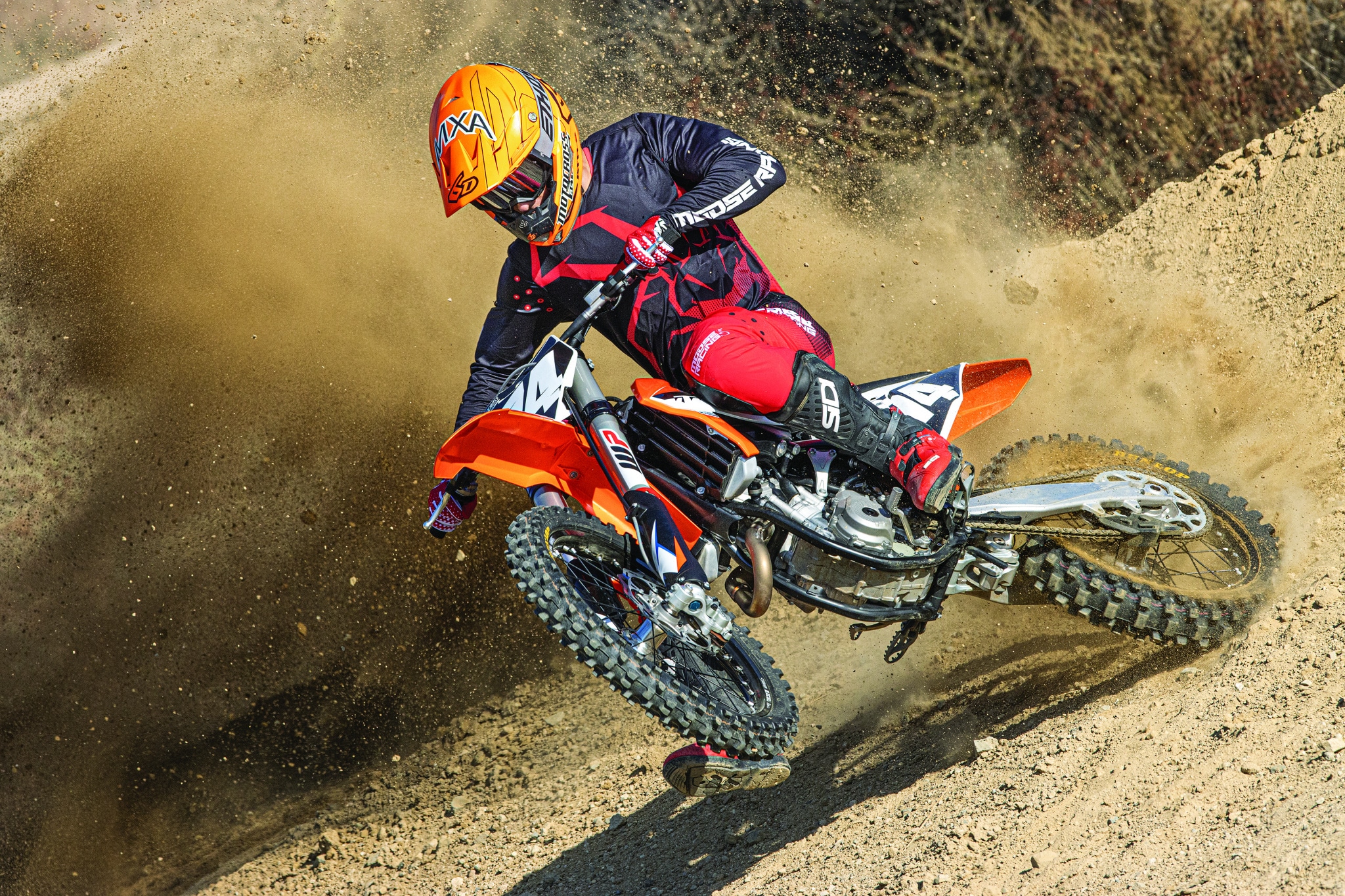 THE GEAR: Jersey: Moose Racing Agroid, Pants: Moose Racing Agroid, Helmet: 6D ATR-2, Goggles: Ethos VIsion Holeshot, Boots: Sidi Atojo.
THE GEAR: Jersey: Moose Racing Agroid, Pants: Moose Racing Agroid, Helmet: 6D ATR-2, Goggles: Ethos VIsion Holeshot, Boots: Sidi Atojo.
Q: FIRST & FOREMOST, IS THE 2021 KTM 250SXF BETTER THAN THE 2020 MODEL?
A: Although the 2021 KTM 250SXF has minimal changes, the bike has been refined to be a step above last year’s model on the track. For 2021, KTM focused its attention on refining the suspension components with an emphasis on the WP XACT air forks. MXA is happy about WP’s renewed effort to unravel the mystery of air forks. The Japanese manufacturers gave up on air suspension due to negative customer feedback and lack of follow-through with their air fork development. The Showa SFF and Kayaba PSF air forks were too complicated, too different and too immature. WP refused to give up on the benefits of air suspension, which include a 3-pound weight savings, infinitely adjustable spring rates and fewer parts.
What has matured over the past six years is the 250SXF’s powerplant. It has aged like Ricky Carmichael. Sure, Ricky gained more than a few pounds after his retirement, but you would too if you worked your butt off your whole life and retired with millions in the bank; however, even off the couch, Ricky could still be up there with the top guys today. The KTM 250SXF engine didn’t go into retirement or pack on the pounds, but it can easily come off the couch and teach the competition a few new tricks.
Q: WHAT IS UPDATED ON THE 2021 KTM 250SXF?
A: Last year KTM massaged the 250SXF in the suspension department and offered an optional perforated airbox cover in order to open up the restrictive airbox that was introduced in 2019. For 2021, six changes were made to the 250SXF, with the most significant being to the suspension.

(1) Forks. The KTM R&D team spent most of its time and budget on the forks for 2021. How do we know? (a) We watched them all last year at every SoCal racetrack turning clickers and changing components day in and day out. (b) We can feel the difference. The WP XACT air forks were redesigned from the bottom up with the addition of oil-bypass notches, four bypass holes in the air seal, new bump-stop rubber replacing the previous bottoming cone, a longer cross-over bleed slot, increased volume in the negative side of the fork cartridge, a hand-adjustable rebound clicker and new valving, including the ingenious “trampoline shim.” Every internal change was designed to address a specific shortcoming in the traditional feel of air forks. (c) What KTM didn’t do was shorten the forks and shock like on its white brother the Husky FC250. Since Husqvarna’s shortened suspension is a smash hit with test riders, we can’t wait to see what KTM does for next year.
(2) Shock. The WP shock got a reworked setting to match the XACT air forks. Plus, a Viton O-ring was added behind the shock bushing in hopes of reducing shock fade.
(3) Linkage. Low-friction SKF linkage bearing seals were used. This may not seem like a noteworthy change; however, we have had great testing experience with the new SKF seals. They work.
(4) Rear fender. KTM changed the rear fender color from white to orange for 2021.
(5) BNG. The graphics have been altered slightly.
(6) Mapping. Both ECU maps have been updated for 2021. KTM still calls Map 1 the standard map and Map 2 the aggressive map, but take it from us, Map 1 is much more aggressive than Map 2.
The 2021 KTM 250SXF is a better, more refined version of the 2020 model.
Q: IS THE 2021 KTM 250SXF POWERPLANT STILL A THREAT TO THE COMPETITION?
A: The old adage “if something isn’t broken, don’t fix it” has held true for the 250SXF. Motorcycle manufacturing history has proven that big changes, even with good intentions, can turn bad very quickly. Case in point, the 2009 CRF450, 2018 CRF250 and 2017 KX250F. These three models were steps backward that not only hurt the reputation of the brand but set development of better bikes back four years.
We understand that motorcycle manufacturers are scolded when they don’t make big changes, but making them is a catch-22. We’d much rather have the old-school 2016 Kawasaki KX250 engine than anything they made in the last five years, but that ship sailed in 2017. The KTM 250SXF powerplant isn’t ready to sail into the sunset yet. It is still strong, but its tipping point will demand an all-new KTM 250SXF engine soon.
The 2021 KTM 250SXF powerplant has stretched well beyond the Austrian firm’s normal production cycle. KTM has given the competition six years to match the 250SXF’s total powerband, but Honda, Yamaha, Suzuki and Kawasaki haven’t taken advantage of it.
KTM isn’t resting on its laurels. The brand is just being smart. It costs millions of dollars to build an all-new engine. KTM wants to squeeze every last drop out of the potent 250SXF powerplant—until another manufacture tops them or until the new KTM engine on the drawing boards is five years ahead of the competition, as the current one was. KTM doesn’t have to worry about 2021; it has the only powerband that has it all.
It is true that the 250SXF engine doesn’t garner as many accolades in 2021 as it did five years ago, but it doesn’t have to because it still reigns as the king of overall power. You might think that Yamaha is the heir apparent to the 250 class throne. It is true that the 2021 YZ250F blows the doors off the 250SXF at the crack of the throttle, but when it hits the top of the midrange, the KTM says bye-bye. Paradoxically, the KX250 might be the peak horsepower king, but it can’t get out of its own way when you try to get it going out of a tight corner. The 2021 KTM 250SXF is the only engine that provides a powerful bottom, strong midrange and incredible top-end. This style of powerband suits any rider. If you like to short shift and roll on the throttle—no problem, just go with lower gearing. If you like eye-watering, high-rpm fun—just leave the gearing stock and hang on.
The YZ250F and KX250 powerplants are more exciting on the track; however, that is an illusion. We aren’t trying to take anything away from the YZ250F and KX250; they are the best engines behind the Austrian trio (KTM, Husky and GasGas), but the excitement of both the KX and YZ powerbands is due to the lack of power in other areas of their curves. Yes, the YZ250F hits hard down low, but if it didn’t, it would run like a doorstop. Yes, the KX250 revs to the moon, but if Apollo 11 had gotten off the launch pad as slowly as the KX250 gets out of a corner, it would never have made it to the moon. The 2021 KTM 250SXF has no dips along its power curve, and the power is very linear. This linear curve allows the power to build progressively, which translates into a broader, longer and more usable thrust. Unlike the YZ250F and KX250, the KTM 250SXF pulls from bottom to top. If there were a motorcycle Olympics, the YZ250F would win the gold medal in pole vaulting and the KX250 would win the gold in the long jump, but the 2021 KTM 250SXF would win the Olympic Decathlon for best all-around performance.
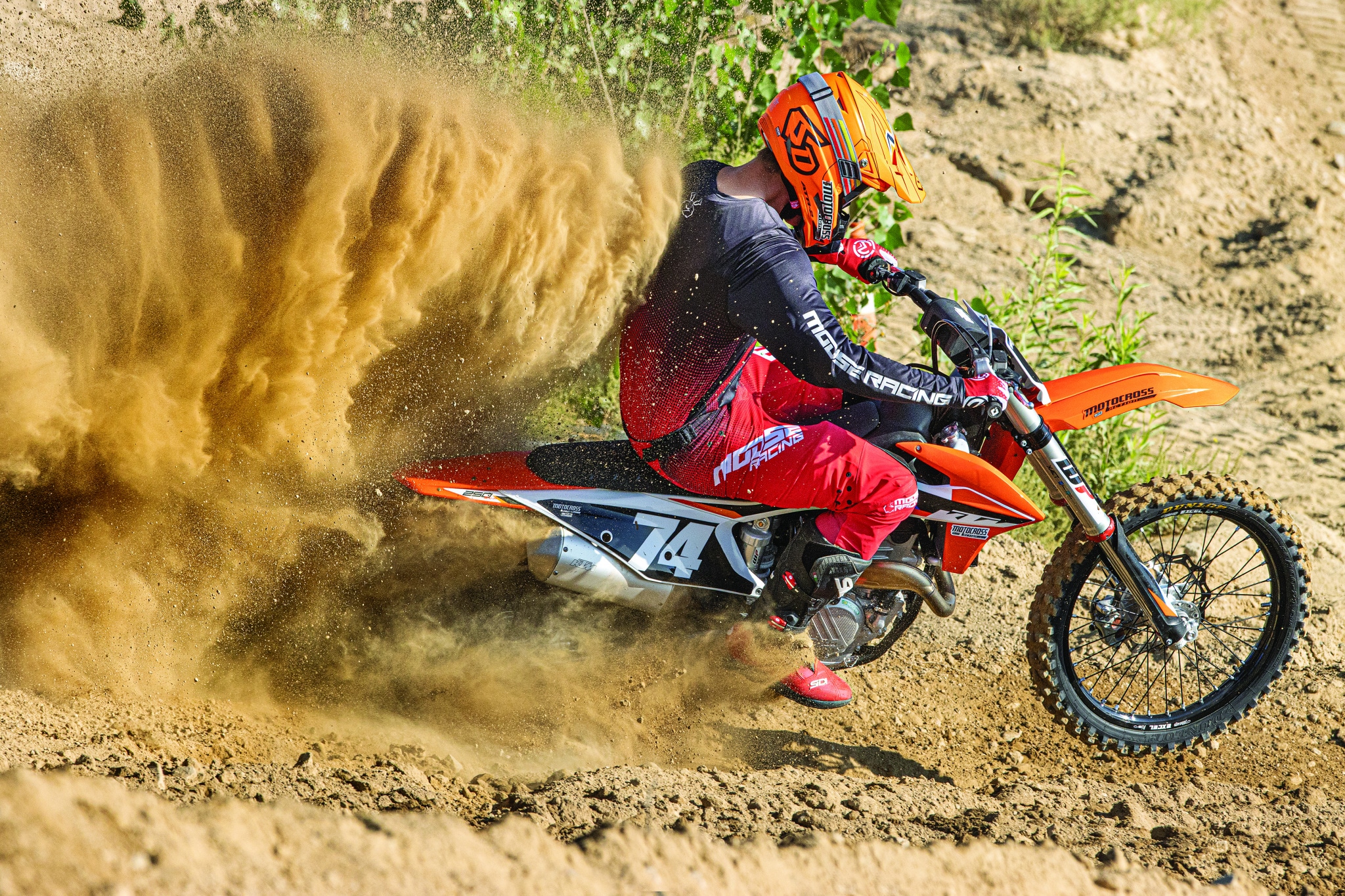 If you want a bike that is race ready, the 250SXF is your bike of choice.
If you want a bike that is race ready, the 250SXF is your bike of choice.
Q: WHAT DID WE THINK OF THE GEARING?
A: The funny thing is that every year the MXA test riders seem to run different gearing even though the engine has remained the same. What has changed are the airbox and maps. In 2019, KTM introduced a smaller airbox that was more restrictive, along with soft feeling maps. It was a double whammy for the 250SXF, as these changes almost knocked the 250SXF off its high horse. The YZ250F was nipping at its heels as the KTM powerband was soft and had no excitement to it.
In 2020, KTM introduced an optional vented airbox that allowed the engine to breathe, which in turn produced more power and livened up the engine.
For 2021, the KTM 250SXF still comes with the vented airbox (which we recommend if you want the most out of the engine), but also has improved mapping. The new mapping gets the bike moving faster out of the gate and runs through the rpm range quicker. So what does all this have to do with gearing? Everything. By getting more snap from the engine, thanks to the airbox and mapping, the KTM 250SXF revs through the midrange quicker and gets to the top in less time with the stock gearing.
The great thing is that if you want the 250SXF to pull harder so it feels more like a YZ250F on the bottom, go up a tooth or two in the rear. It won’t take anything away from the KTM engine. This is the most versatile engine on the showroom floor. It may be getting older, but it is still getting better.
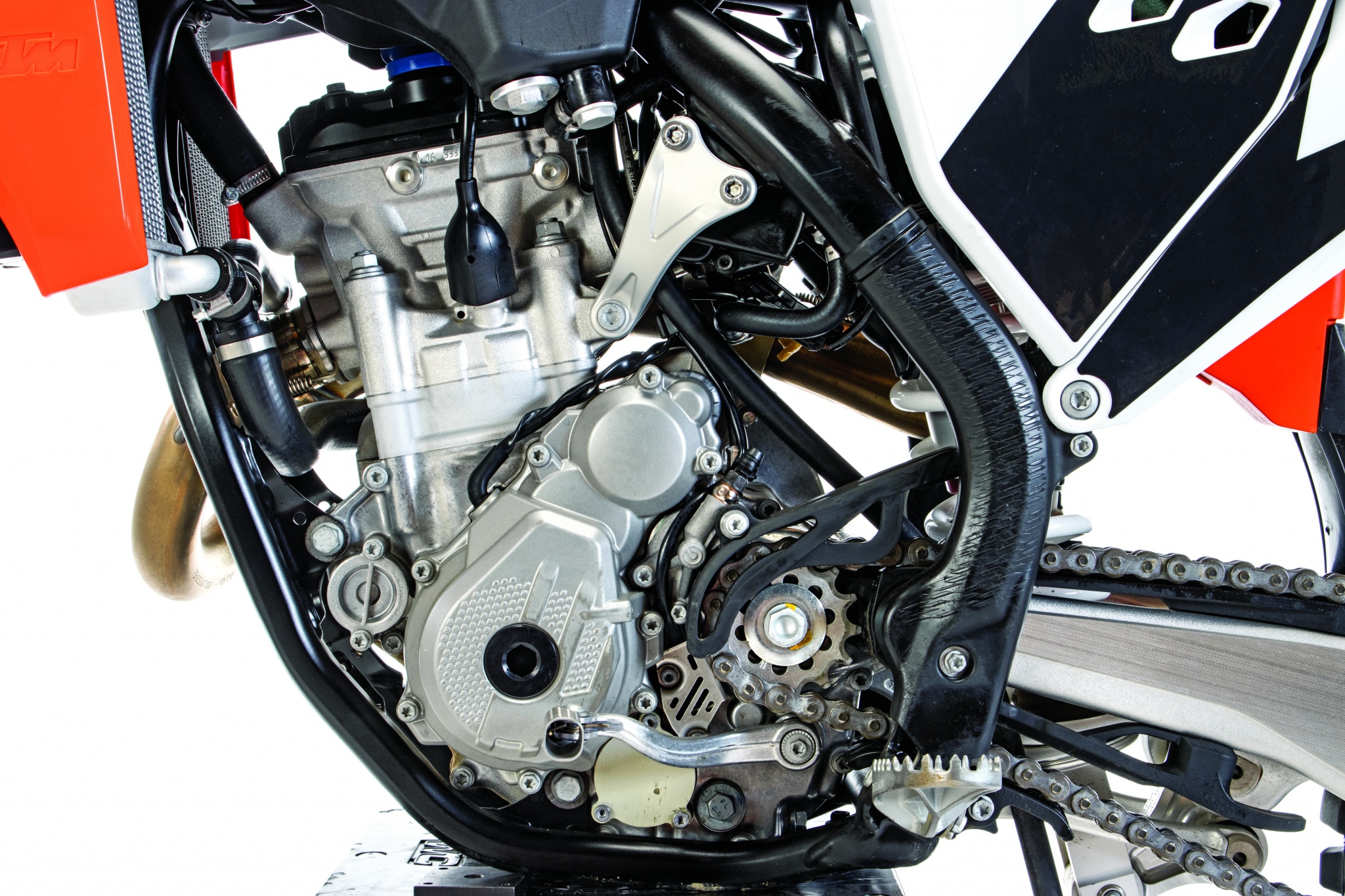
The engine may be six years old, but it still offers the best overall powerband.
Q: DO WE LIKE THE 2021 KTM SUSPENSION AS MUCH AS THE 2021 HUSQVARNA SUSPENSION?
A: Yes and no. This conundrum is caused by the fact that both the 250SXF and FC250 have identical valving. The difference is that the Husky FC250’s fork stanchions and cartridge rods are 10mm shorter. The rear of the Husqvarna is also significantly lower, as Husky lengthened the seal head on the shock shaft, increased the length of the rising-rate pull rods and designed a totally new bell crank to keep the same rising-rate curve as the KTM 250SXF, which doesn’t get any of those other Husqvarna changes.
That said, every MXA test rider chose the Husqvarna FC250 suspension over the KTM 250SXF. This does beg the question of why a few mathematical differences in fork and shock stroke, especially ones that shorten the travel at both ends of the Husky, result in such noticeable improvements for the FC250. In theory, having less travel should mean the curve would start sooner and ramp up faster.
We even tried to replicate the FC250 feel on our KTM 250SXF by sliding the forks up in the clamps to the fourth line and lowering the sag to 107mm instead of 105mm. The experiment was somewhat successful. We were able to achieve close to the same plush-but-firm action as with the FC250 out of the KTM forks, but the shock sat too low in the stroke, rebounded slower, and had a propensity to bottom with this much sag. We stiffened up the shock by 10 clicks and turned the rebound clicker all the way out. This helped, but we couldn’t fully replicate the FC250’s superior feel.
We aren’t saying the 2021 KTM 250SXF suspension is bad; we were just surprised that the FC250 components were that much better. The only downfall of the Husqvarna FC250 suspension was that the rear shock would wallow more under a load than the 250SXF’s rear shock.
If KTM’s engineering department asks us if they should make the same changes to their 2022 suspension that Husqvarna made in 2021, we would say, “Yes.” The 2021 Husky suspension allows the FC250 to handle better, turn better, stay higher in the stroke and eliminate harsh spots. It allows short riders to touch the ground, and it feels plusher. KTM would be crazy not to borrow something from Husqvarna for a change.
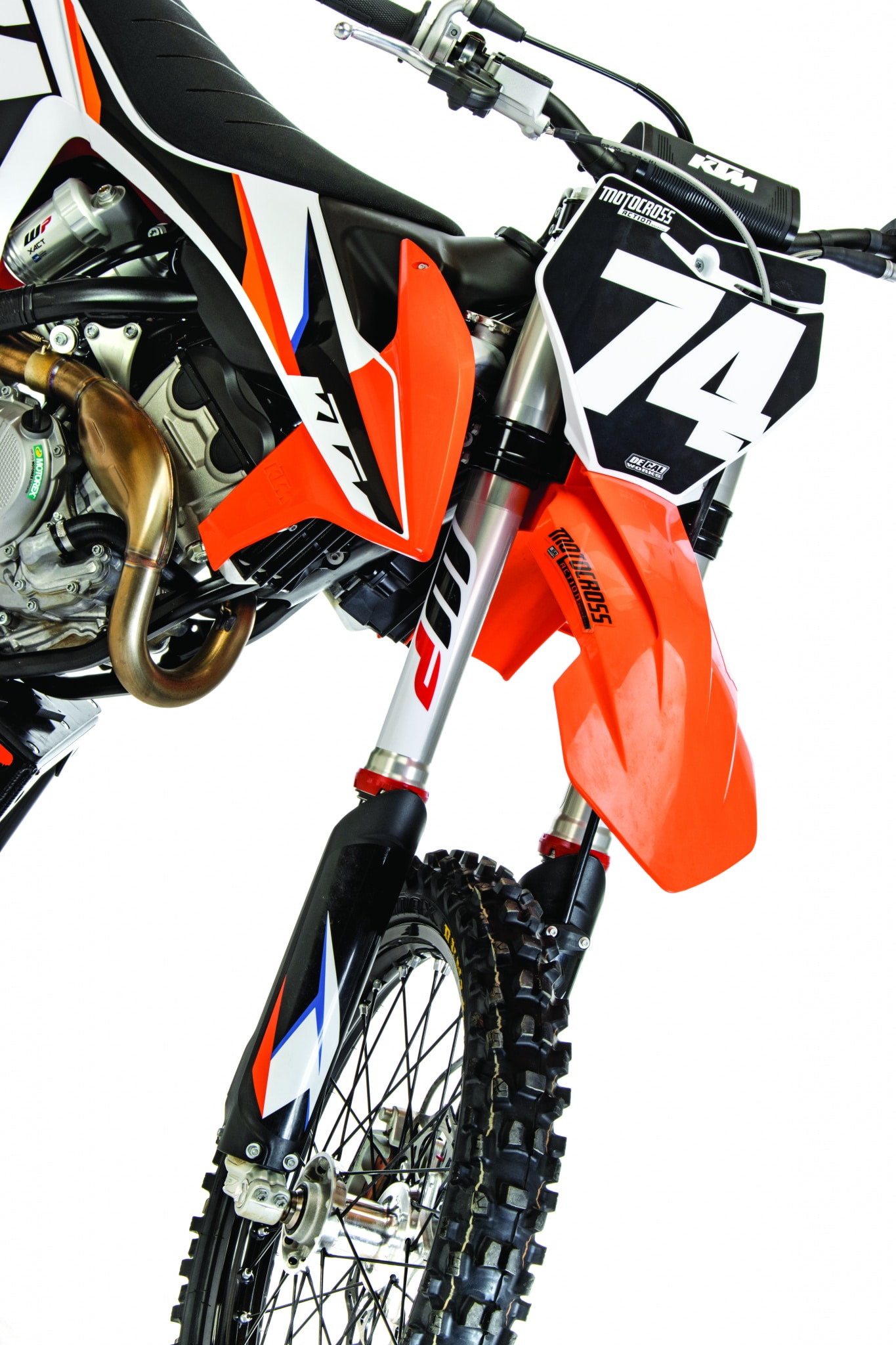
The WP XACT air forks are something to brag about.
Q: WHAT DID WE LIKE?
A: The like list:
(1) Weight. The 2021 KTM 250SXF is the lightest 250 four-stroke in its class, weighing 218 pounds. That’s 10 pounds lighter than a CRF250.
(2) Brakes. The KTM’s Brembo brakes are way ahead of the rest of the class.
(3) Air filter. The no-tools airbox makes changing an air filter simple and easy.
(4) Hydraulic clutch. A self-adjusting, bulletproof clutch is one less thing you have to think about. It will last twice as long as the red, green, blue or yellow clutches.
(5) Power. The 250SXF offers the most complete powerband in the class.
(6) Ergonomics. This is an easy bike to feel comfortable on.
(7) Suspension. The XACT air forks are better than most of the coil-spring forks on the market.
(8) Vented airbox. The optional ventilated airbox cover is free power.
(9) Maps. KTM may have mislabeled the maps. Either way, Map 1 is the bee’s knees. The aggressive Map 2 is more mild than wild.
 You can gear the bike lower or higher without taking much away from the power character.
You can gear the bike lower or higher without taking much away from the power character.
Q: WHAT DID WE HATE?
A: The hate list:
(1) Sprocket. Watch the sprocket bolts. They come loose.
(2) Spokes. The spokes still come loose. The spokes next to the rim lock are the problem. If they are loose, it’s time to break out the spoke wrench.
(3) Bleed screws. We change the fork bleed screws from Torx to Phillips.
(4) Preload ring. The preload ring takes a beating.
(5) Fork adjuster. The thin and short clicker adjuster hurts your fingers after a few clicks. We like the hand-operated rebound clicker at the bottom of the forks, but it still isn’t finger-friendly.
Q: WHAT DO WE REALLY THINK?
A: The KTM 250SXF has won the MXA 250 shootout two years in a row. The only reason it didn’t win before then was because of its wretched 4CS forks, bad mapping and closed off airbox. KTM still reigns as the king of the 250 class, and it did it with the same basic power plant. It’s no secret that half of the Big Four manufacturers have tried to replicate the KTM engine’s high-rpm design by borrowing from KTM’s playbook, but they can’t seem to get the recipe for success right. Perhaps it is because Kawasaki and Honda are just adding borrowed parts in a piecemeal fashion. You can’t make Peking duck a l’Orange without a julienne of fresh orange zest.
The 2021 KTM 250SXF is light, agile, fast and (something we thought we’d never say) well-suspended. It turns on a dime and stays steady at speed. We can go on and on about what is good about the 250SXF, like its great Brembo brakes, hydraulic clutch, no-tools airbox and class-leading light weight, but we think you get the point.
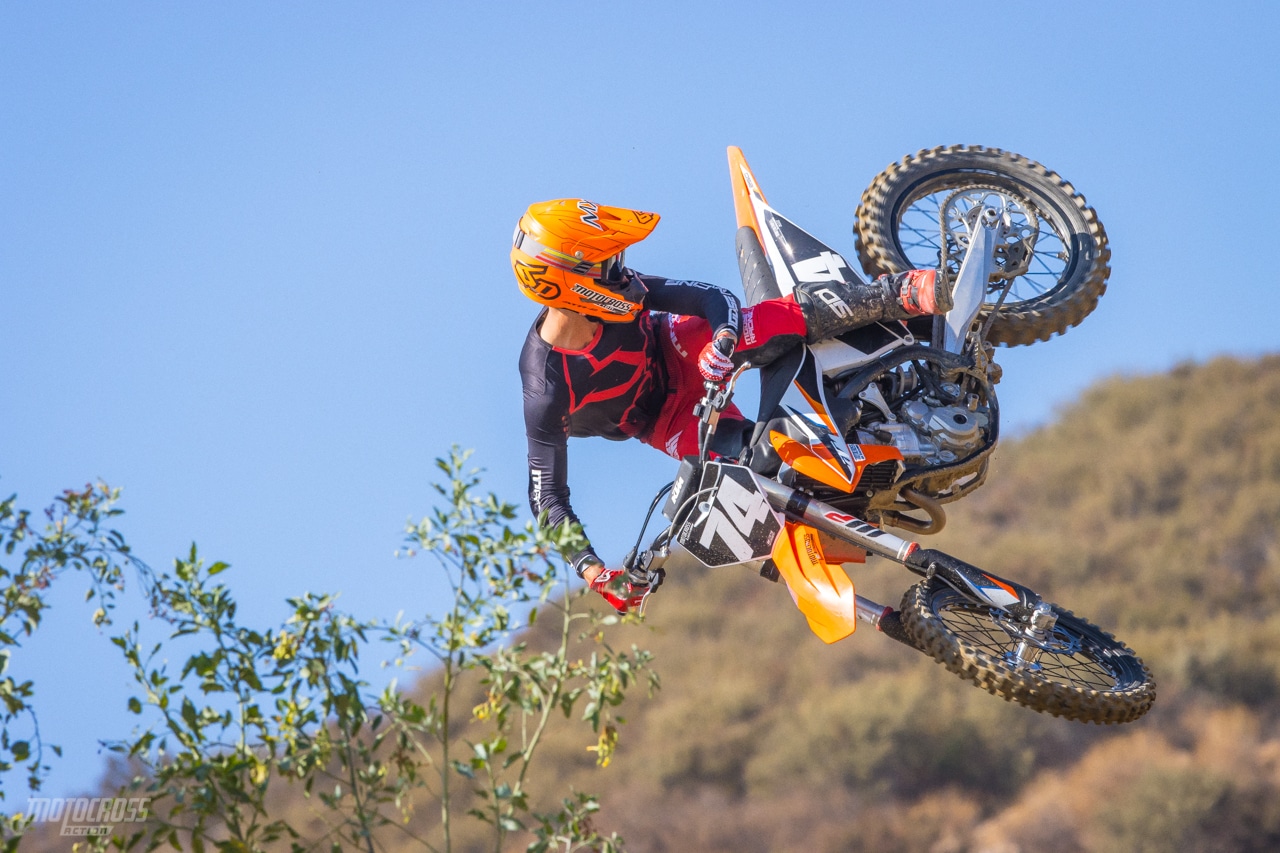 MXA’S 2021 KTM 250SXF SETUP SPECS
MXA’S 2021 KTM 250SXF SETUP SPECS
This is how we set up our 2021 KTM 250SXF for racing. We offer it as a guide to help you find your own sweet spot.
48MM XACT FORK SETTINGS
The stock KTM air-fork setting is 152 psi or 10.5 bar, which is 4 psi lower than in 2020 and 5 psi more than in 2019. The stock pressure worked well for most of our testers on smoother tracks. Faster testers complained that the forks were getting too low in their stroke and bottomed at times. These riders went up a few psi to stop the bottoming and adjusted the compression clicker to feel. Those who went up on pressure tended to go out on the compression a few clicks. For hardcore racing, we recommend this fork setup for an average rider on the 2021 KTM 250SXF (stock specs are in parentheses):
Air pressure: 152 psi
Compression: 10 clicks out (15 clicks out)
Rebound: 15 clicks out
Fork-leg height: Third line
Notes: If you are slow, light or old, don’t be afraid to experiment with air pressures. We have test riders who run as low as 138 psi and, conversely, we have test riders who run 160 psi. Remember to check your desired air pressure every time you ride. We also suggest bleeding those pesky air screws after every riding interval. They can build up air fast and adversely affect your ride.
WP SHOCK SETTINGS
Overall, this is a good shock. Although we do make clicker adjustments, we rarely stray far from the stock 15 clicks out on compression. The shock can be dialed in with only a few clicker changes. As a rule of thumb, most MXA test riders leave the low-speed compression on the stock setting and focus on the high-speed dial to make the changes. For hardcore racing, we recommend this shock setup for the 2021 KTM 250SXF (stock specs are in parentheses):
Spring rate: 45 N/mm
Race sag: 105mm
Hi-compression: 2 turns out
Lo-compression: 15 clicks out
Rebound: 15 clicks out
Notes: Some testers like the sag at 107mm with the forks dropped to the fourth line. This brings the entire bike down.


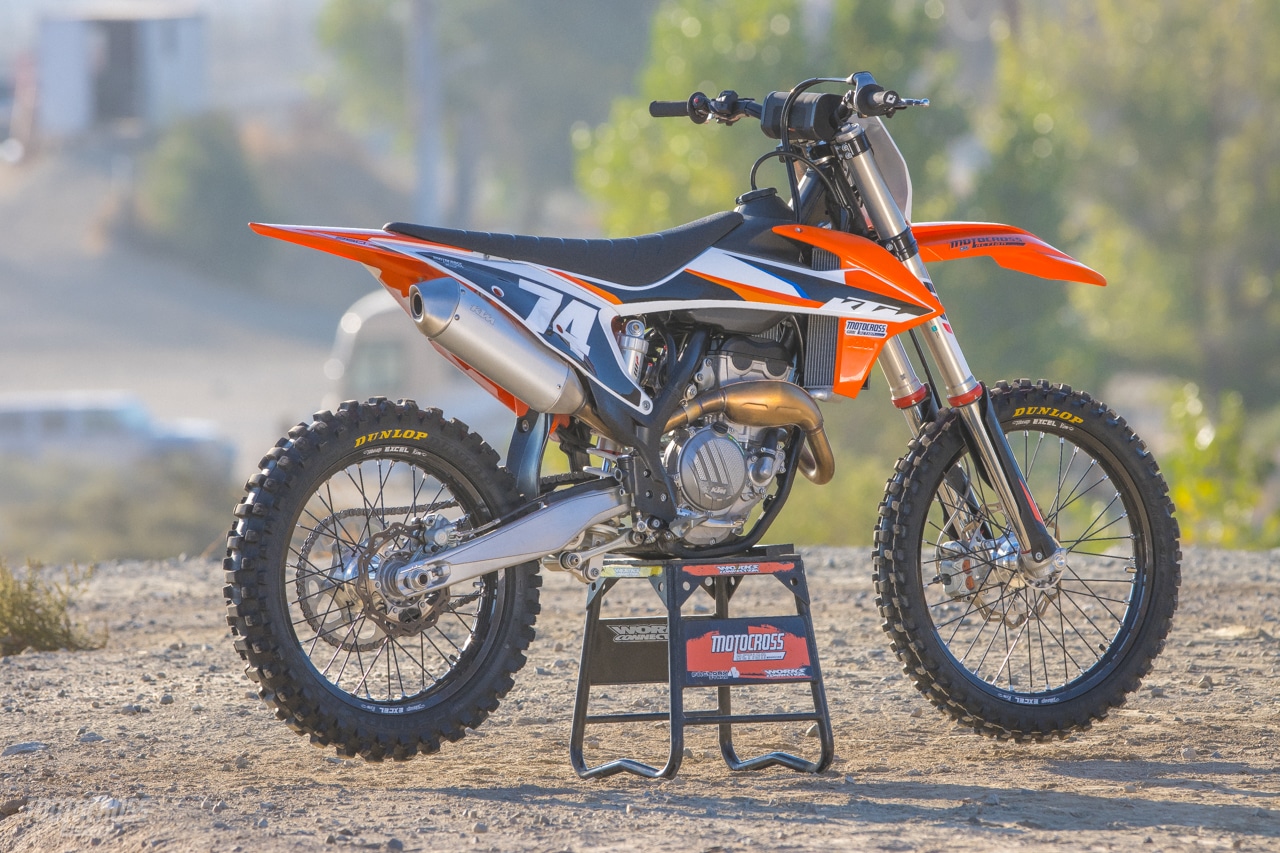
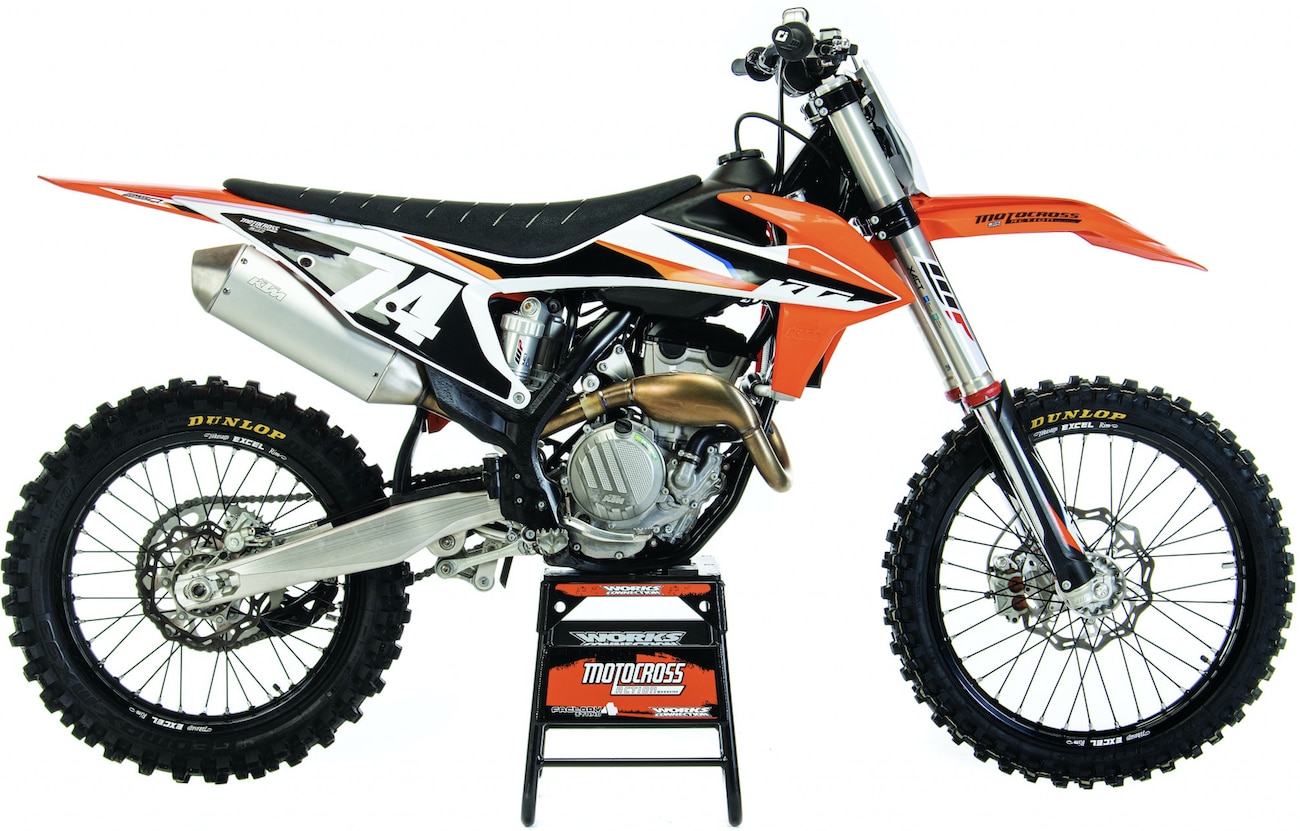
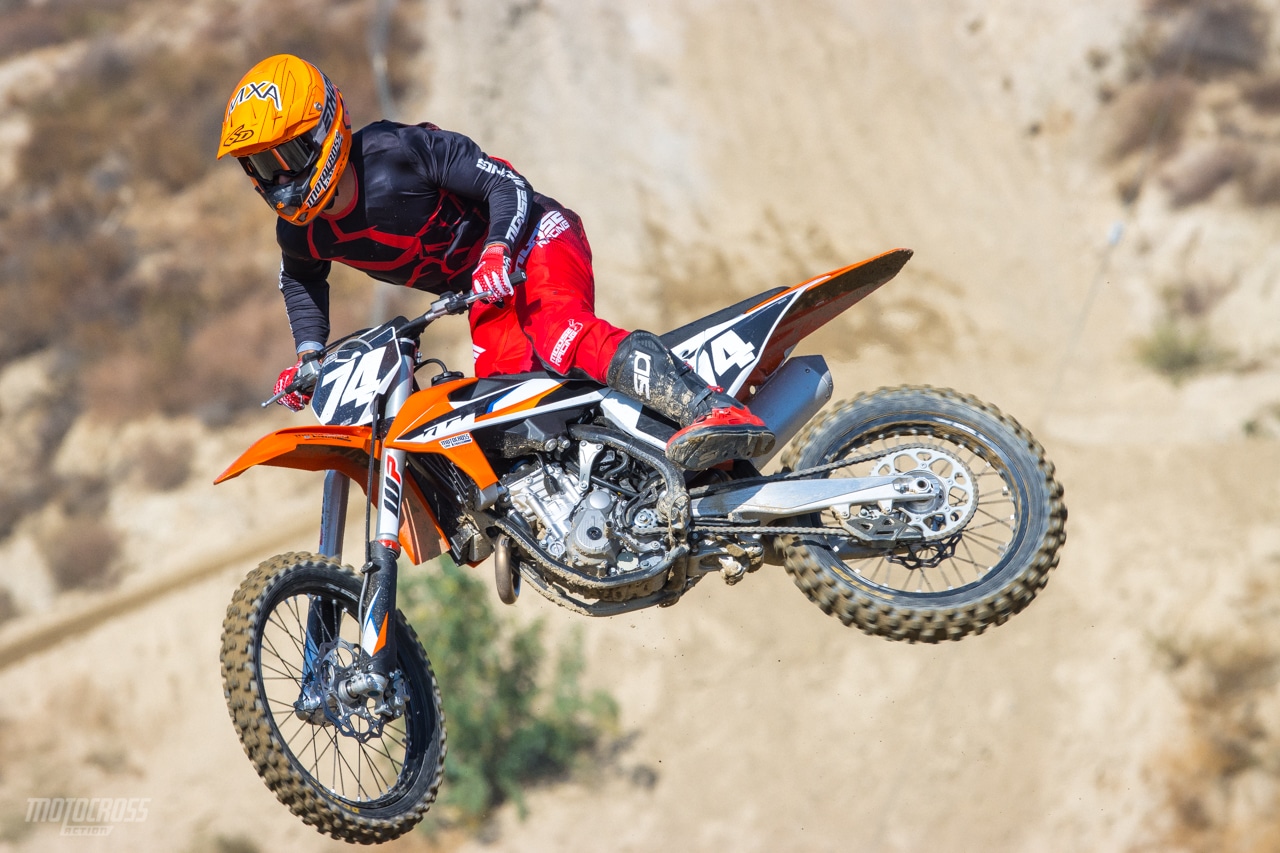





Comments are closed.